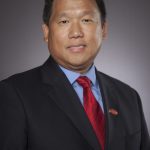Leadership in Human as a Service (HuaaS)

A few months ago, my former colleague @RichieEtwaru Group Vice President, Clouding and Digital Innovation at Cegedim Relationship Management shared his idea Human as a Service (HuaaS). For more information on HuaaS, please visit #brainfood.
Richie described Human as a Service as human capacity clouded (a verb) and delivered as a Service.
“Business leaders interested in the future of IT should stop thinking of ‘the cloud’ as a noun and start thinking about ‘clouding’ as a verb. When we discuss cloud computing, we’re describing a set of efficiency principles applied to once stateful compute and store resources that are now stateless and liquid referred to as the cloud (a noun). Clouding (as a verb) everything enables the Everything as a Service phenomenon.
Clouding is not entirely new. One could argue, for example, that condominiums and hotels were early multitenant housing clouds. Similarly, Zipcar and Getaround are car clouds, offering Transportation as a Service. In the clouded world, everything is debatable as a Service, including Human capacity.” (Etwaru, 2012)
As I ponder on this concept, I decided to share my thoughts on leadership in the context of HuaaS.
In this competitive environment, every company is constantly seeking new ways to improve their competitive advantage. Innovation has been a key differentiator in the last five years and continues to be; it means companies who innovate are able to develop solutions or services that make them the market leaders. New or enhancement of existing products or services enable companies to sustain their market share.
With the introduction of HuaaS, we need to flip the model of managing our people on the side and determine the most suitable approach to ensure efficient and effective management of our most important resources. The change in resource management requires a different form of leadership. Here are some of the things leaders must learn:
- Adapting to change – fundamentally speaking the reference to change in this context is not just organizational structure. It means a shift in the mindset of how we adapt to the new model. Leaders must empower others to help facilitate the change.
- Losing control – I refer to this as losing absolute control over how, when, or where to secure their resources, but understanding the need to get the job done and the work need to be fulfilled. The demand for resources met with the appropriate supply using a cloud-based matching process. In the end, the employer can filter and approve the recommended list.
- Evangelize – believing in the model comes by adapting to change. For it to work, the leader must share the vision of HuaaS. What does it mean to the current employee? How are they being impacted? Also, explaining the way forward.
- Broad and inclusive thinking - this means that leaders must think broadly of the effect of HuaaS to the organization. Having a narrow focus on task or people could lead things to go wrong. It also means that numbers cannot be the only measurement of success. The key to being inclusive is having an appropriate balance on task and relationship and is essential to the success of the leader.
- Think governance – proper guidelines and governance is needed to ensure that the adaption goes smoothly. Frequent audit and measurement of your progress is essential to the success of the adaption.
- Empowerment – leaders often know that they don’t need to do it alone. In this case, they need to let those who are familiar with HuaaS carry out the implementation. Empowering the subject matter of HuaaS will lead to proper and efficient rollout of the program.
To succeed in leading HuaaS adaption it is important that the leader immerse him/herself and understand the value it brings. The leader plays an important role in evangelizing and hiring resources who can execute the strategy. Success can only be achieved providing adequate support that facilitates the change. Celebrating the success is an essential step in letting people knows that it is not a fad, but a program that is meant to last. In the end, the adaption rest squarely on the shoulder of the leader.








In point #1, doesn’t a shift in the mindset precede structure and strategy? Just asking.
very true.. well said